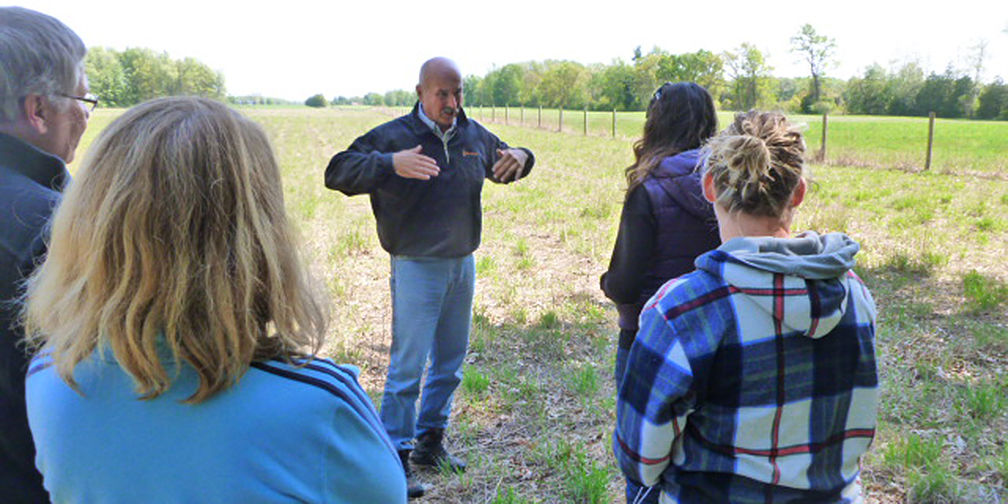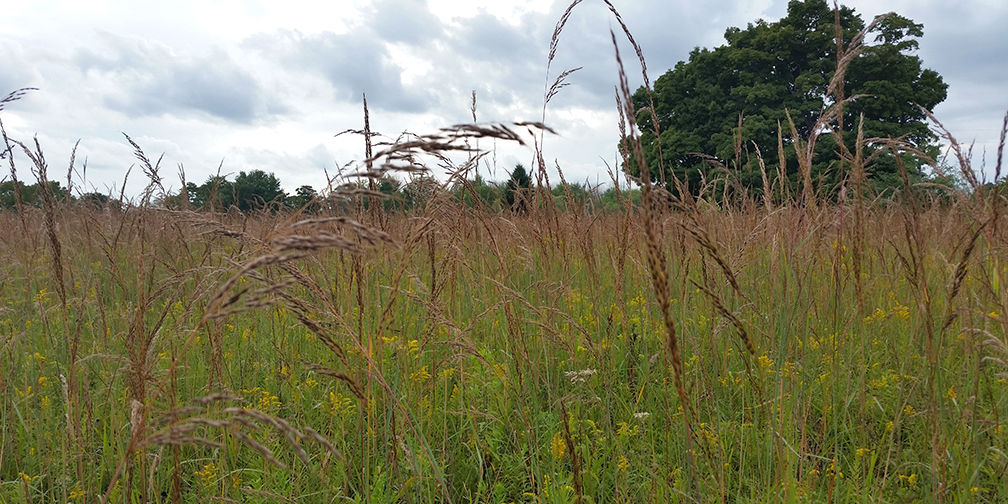Ontario Nature Blog
Receive email alerts about breaking conservation
and environmental news.
© Lora Denis
© Ian Muttoo
During a visit to a Norfolk County farm last spring, I was reminded how the Alternative Land Use Services (ALUS) program helps to bring the farming and conservation communities together to work towards a shared vision: a healthy and productive countryside in Ontario.
On a former tobacco farm in Norfolk County, Bryan and Cathy Gilvesy tend to about 200 head of Texas longhorn cattle on their gorgeous 142-hectare YU Ranch. A highlight of any trip to Norfolk is a tour through the parts of the ranch that encompass Carolinian forest.

Brian Gilvesy giving us a tour of his ranch © Joshua Wise
Bryan led our group past old tobacco kilns and into the thick woodlot. As we walked, Bryan explained the transition after the collapse of tobacco. Like many others in the area, the Gilvesys needed to find a new approach to farming. This is where the ALUS program fits in.
ALUS supports farmers’ efforts to be good land stewards. By necessity, famers are professional land managers who collectively control most of the land in southern and eastern Ontario. Through ALUS, farmers provide clean drinking water, enhance habitat, increase forest cover and protect vulnerable species like at-risk grassland birds and pollinators.

Tallgrass prairie © Joshua Wise
As our group emerged from the forest and onto the ranch’s eastern-most pasture, currently free of cattle, Bryan pointed to a clump of grass, saying “The most exciting part is what’s going on under those shoots.” He explained that the deep roots help sequester and store carbon, regenerate the organic soil matter, provide habitat for ground nesting bees and during the late spring and early summer provide a place for at-risk bobolinks and eastern meadowlarks to fledge their young. This native tall-grass prairie, not yet ankle high, covered the field. Given that over the past two centuries, 98% of southern Ontario’s native grasslands have disappeared, the value of this 40-hectare restored field is extraordinary.
Beyond the ecological benefits, on-the-farm prairie ecosystems provide cattle with warm-season grass for feed at the end of August. Despite one of the worst droughts in a decade, this native grass was able to grow, unlike traditional hay, into a protein rich energy source of feed available through much of the winter.
Incentive payments through ALUS make projects like the tall-grass prairie at the YU Ranch possible. Through the program, selected parcels of farmland are converted to natural cover. Projects range from creating tall-grass prairie to wetland restoration, pollinator hedgerows and more.
Through generous funding from The Garfield Weston Foundation and the Ontario Trillium Foundation ALUS has expanded into four new Ontario communities: Grey-Bruce, Stormont-Dundas and Glengarry, Bayham Township and the Town of Caledon.
Working with ALUS and people like Bryan and Cathy, we hope to create a countryside that can support the rich biodiversity that characterizes a healthy landscape, while balancing the need to feed a growing population.

Gananoque Lake Nature Reserve © Smera Sukumar